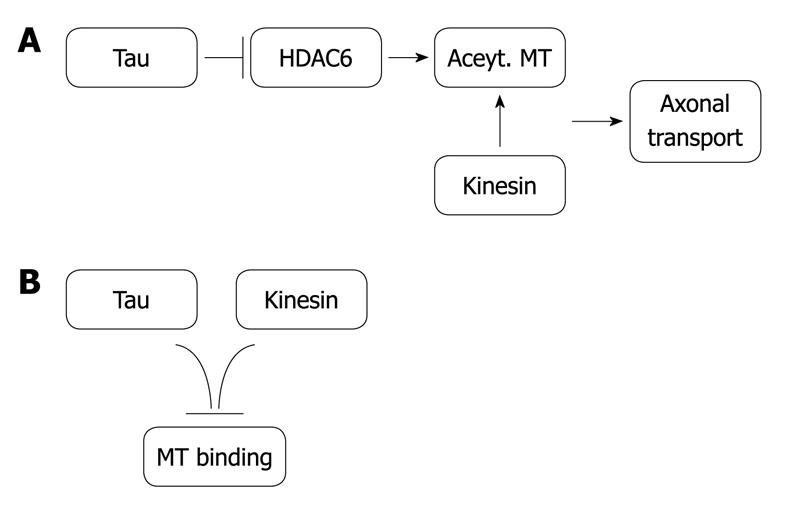Copyright
©2010 Baishideng Publishing Group Co.
World J Biol Chem. May 26, 2010; 1(5): 81-84
Published online May 26, 2010. doi: 10.4331/wjbc.v1.i5.81
Published online May 26, 2010. doi: 10.4331/wjbc.v1.i5.81
Figure 1 A possible mechanism for tau toxicity in neuronal cells.
Upon modification by extracellular signals, tau is no longer bound to microtubules (MT). Free modified tau could be toxic for a neuron and degeneration could take place. It may result in the presence of extracellular tau that could be toxic for neighboring cells promoting their death.
Figure 2 Tau could have two opposite effects on axonal transport.
A: It could facilitate the presence of acetylated microtubules and, therefore, the binding of kinesin to them. It would facilitate axonal transport; B: However, tau and kinesin may compete for the same binding site in microtubules. It could decrease axonal transport. Probably, an optimal amount of tau is needed for an optimal axonal transport. HDAC6: Histone deacetylase 6.
- Citation: Barreda EG, Avila J. Is tau a suitable therapeutical target in tauopathies? World J Biol Chem 2010; 1(5): 81-84
- URL: https://www.wjgnet.com/1949-8454/full/v1/i5/81.htm
- DOI: https://dx.doi.org/10.4331/wjbc.v1.i5.81










